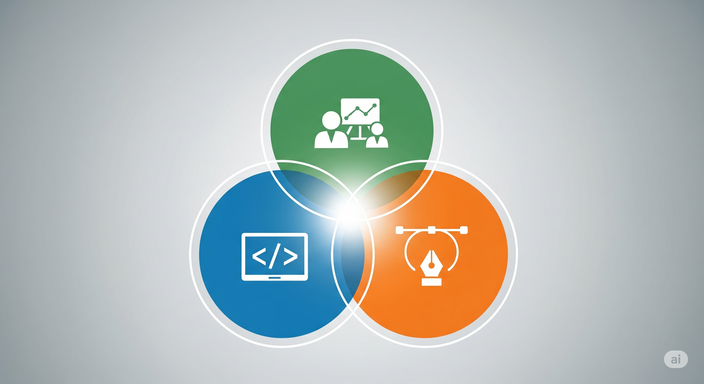Ever seen a project spiral out of control in a mess of email chains, outdated file attachments, and confusing feedback? A product manager references one version of a design, a developer codes another, and the designer is left trying to reconcile the differences. This isn’t just frustrating; it’s expensive. Inefficient workflows lead to wasted hours, costly rework, and a delayed time-to-market.
In today’s fast-paced environment, the biggest drag on a company’s momentum is often internal friction. The traditional “assembly line” approach—where designs are created in isolation and “thrown over the wall” to engineering—is broken. It creates silos that hinder innovation and drain resources.
This is where a tool like Figma changes the game. It’s more than just design software; it’s a collaborative ecosystem that serves as the single source of truth for entire product teams. When leveraged correctly, it dissolves departmental walls and fosters true synergy.
A Centralised Hub for Every Stakeholder
The real power of Figma is its ability to bring different roles together in a single, live environment. This eliminates the guesswork and ensures everyone is working from the same playbook.
- For Product Managers: Imagine being able to track design progress in real-time without scheduling another status meeting. Product managers can drop comments directly onto a prototype, link designs to specific user stories, and ensure the user experience aligns perfectly with business goals. This contextual feedback loop is immediate, clear, and documented in one place.
- For Engineers: The handoff process is no longer a point of friction but a seamless transition. With Figma’s
Inspectpanel, developers have instant access to the exact measurements, colors, assets, and even code snippets (CSS, XML, SwiftUI) they need. They aren’t working from a static file that might be outdated; they are viewing a live blueprint of what needs to be built, drastically reducing implementation errors and ambiguity. - For Marketing & Leadership: Brand consistency is paramount. Figma allows marketing teams, copywriters, and executives to review designs, access approved brand assets, and provide feedback early in the process. This ensures that the final product is not only functional but also perfectly aligned with the company’s brand and messaging.
The Tangible Business Benefits of True Collaboration
Adopting a collaborative workflow in Figma isn’t just about making people feel included; it delivers concrete business results. Forrester’s “Total Economic Impact™ of Figma” study found that companies experienced a 50% increase in collaboration, leading to significant gains:
- Increased Velocity: When feedback loops are shortened from days to minutes, decision-making accelerates. Teams can iterate faster, solve problems more efficiently, and ship products to market sooner.
- Reduced Rework: By involving developers and product managers early in the design process, potential roadblocks and technical constraints are identified before costly development time is invested. This proactive approach can cut down on rework by as much as 50%, saving both time and money.
- Improved Product Quality: The best products are born from diverse perspectives. When everyone has a seat at the table from the beginning, the final product is more robust, user-friendly, and aligned with market needs. This collaborative approach turns design into a team sport, focused on a shared goal.
Beyond the Pixels
Ultimately, a deep understanding of Figma is not just about the ability to create visually appealing designs. It’s about understanding how to leverage the tool to facilitate communication, streamline workflows, and unite teams.
A designer who can master this is more than a designer—they are a strategic partner who can accelerate a company’s vision and drive business success. They don’t just deliver pixels; they deliver synergy.
